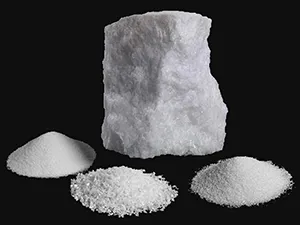Green silicon carbide is made from petroleum coke and high-quality silica, with salt added as an additive, and refined in a high-temperature resistance furnace. It appears as green crystals, is brittle and sharp, and has certain thermal and electrical conductivity. Microscopically, it takes the form of hexagonal crystals. With a Mohs hardness of 9.3, micro hardness of 2940-3300 kg/mm², and Knoop hardness of 2670-2815 kg/mm², it is harder than corundum and only slightly less hard than diamond, cubic boron nitride, and boron carbide.

Glass beads, produced from crushed glass and flat glass materials, are processed into spherical shapes through high-temperature melting.

Boron carbide is produced through high-temperature smelting of boracic acid and carbonaceous materials in electric furnaces. It boasts a theoretical density of 2.52g/cm3, a melting point of 2450°C, and a micro hardness of 4950kgf/mm2.

White fused alumina is produced from high-quality aluminum oxide powder, refined and crystallized through electric arc smelting.

Brown fused alumina is produced by melting high-quality bauxite, iron filings, and anthracite in an electric arc furnace at high temperatures.